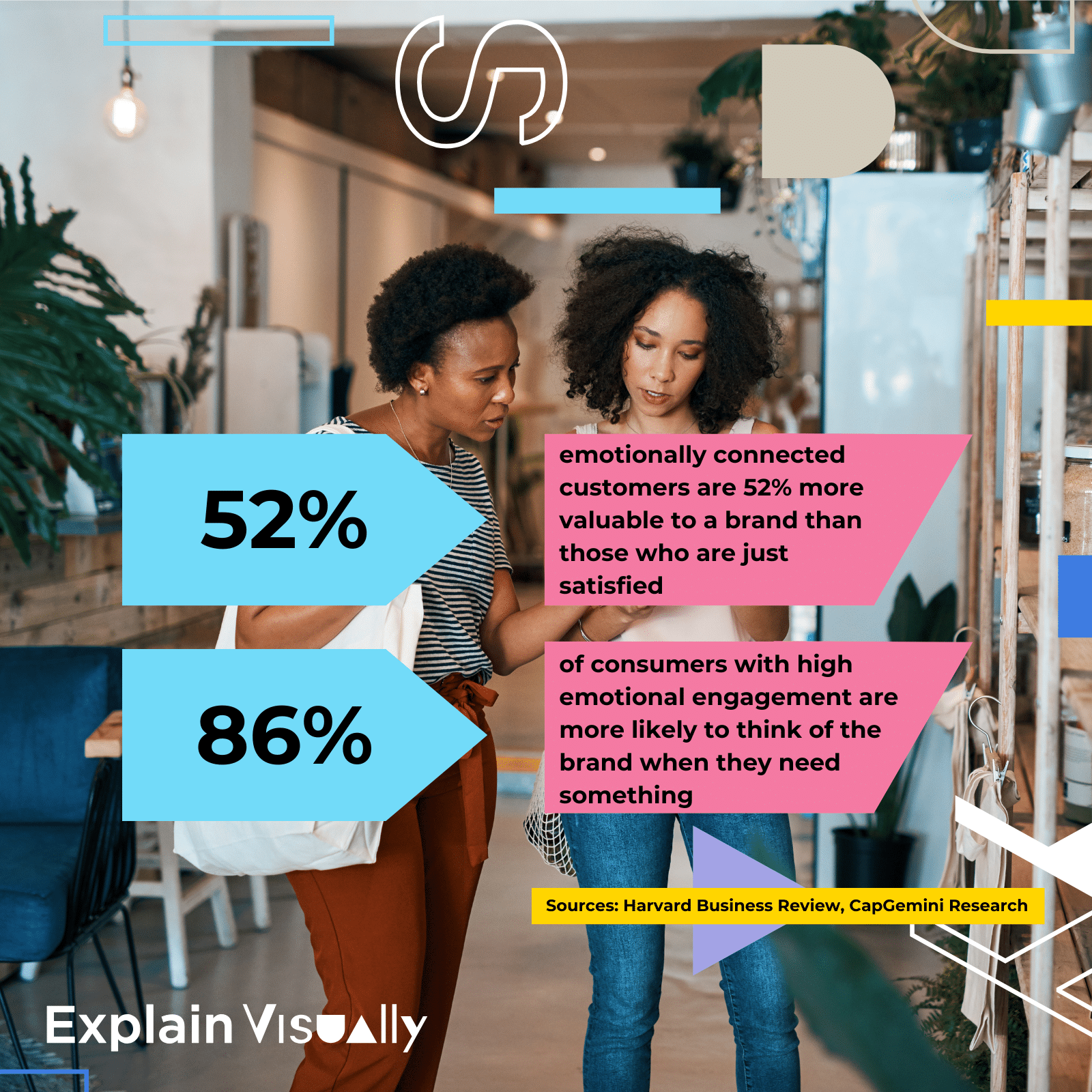By combining visual storytelling techniques – from camera angles to sound design – with an emotionally compelling narrative, storytelling videos create lasting impressions. Brand storytelling videos serve as versatile tools for promoting values, introducing products, or explaining services in ways that engage viewers and keep them invested.
How to Create a Compelling Video Narrative
Creating an effective video narrative starts with understanding the target audience and crafting a story that reflects their pain points or desires. A strong video project has a clear structure: beginning, middle, and end, which guides plot development and directs audience attention toward the brand’s message. Using universal themes like overcoming obstacles or achieving success helps create compelling narratives that leave a lasting impression.
After the video story unfolds, include a call to action that aligns with your brand goals, whether prompting the audience to visit a site, learn more, or share the video. The video length should align with audience viewing habits on platforms like Instagram, YouTube, and TikTok. For example, short videos perform well on mobile platforms, where attention spans are brief.
Visual Storytelling Techniques
Effective visual storytelling involves strategic use of camera angles, scenery, and high-quality visuals to bring an engaging narrative to life. The right camera angles can enhance emotion, build tension, or highlight key moments within a storytelling video, strengthening the video’s impact.
In addition to visuals, audio elements such as music and sound effects are vital for creating an emotional connection between the audience and the story. Background music or dramatic sound cues can set a mood or emphasize moments, adding richness to the video storytelling experience.
Adding live actors brings realism and relatability, as it introduces authentic human emotions and expressions into the narrative. On the other hand, original animations can provide a unique, creative touch to the video, distinguishing the content and making it intriguing for viewers. Both live actors and animations are powerful tools that amplify a compelling narrative and resonate with the target audience.
The Power of Emotional Connection
Theoretically, emotional stories embedded in storytelling videos have the power to drive deeper audience engagement by relating to the personal lives of target audiences. An emotional connection helps brands establish long-lasting relationships with viewers, as a study by Harvard Business Review shows, emotionally connected customers can be up to 52% more valuable than merely satisfied ones. This proves how powerful emotionally driven storytelling can be in building brand loyalty and long-term connections.
Videos that evoke positive emotions such as happiness, nostalgia, or even sadness often create better recall and a deeper sense of connection. These emotional triggers prompt viewers to reflect on their own lives and personal memories, leading to an instant attachment – not just to the video content but to the brand itself.
When a brand can share a story from the heart, it shows they understand their audience’s needs and builds trust, ultimately boosting brand loyalty. A brand that evokes genuine feelings leaves a lasting impression, making individuals more likely to remember and even share the experience with others. For example, 86% of highly emotionally engaged consumers are more likely to consider a brand when they need something, underscoring how emotional stories can lead to long-term loyalty. Research from Harvard Business Review also supports that an emotionally connected customer is worth 52% more to a brand than a merely satisfied one.

Emotional storytelling reaches its peak effectiveness during the holiday season, with themes of family, giving, and togetherness aligning perfectly with viewers’ sentiments at this time. Brands leverage these universal themes to build a strong emotional connection with their target audience by sharing compelling narratives that resonate deeply. One standout example is John Lewis’ holiday ads, which consistently tell heartwarming stories filled with feelings of love, generosity, and nostalgia. These videos capture the essence of the season, making John Lewis an anticipated part of many viewers’ holiday experiences and reinforcing brand loyalty year after year.
Through emotional stories, brands not only capture attention but also create lasting memories. When a storytelling video is crafted with relatable emotional elements, it transforms content into an immersive experience that stays with viewers long after the video ends. In this way, holiday videos go beyond brand storytelling by building emotional bonds that ensure the brand remains top-of-mind each season.
Best Practices for Storytelling Videos
Creating effective storytelling videos requires a thoughtful blend of creativity, strategy, and technical expertise. Here are some tips for crafting video storytelling that captivates your target audience and enhances brand storytelling:
- Keep Videos Short: Video length should match the platform and align with viewers’ short attention spans. On platforms like Instagram and TikTok, brief, engaging videos perform well. Wistia reports that videos under two minutes garner higher engagement, emphasizing the need to tell your story clearly and concisely.
- Use High-Quality Visuals: High-quality visuals and animations are essential for creating a cohesive storytelling video. Professional-grade video content holds viewers’ attention and enhances brand perception. With clear camera angles, dynamic motion graphics, and vibrant visual elements, your video can make a lasting impact.
- Develop Engaging Plots: The video narrative is the core of any successful storytelling format. Whether it’s sharing a brand story, a customer testimonial, or a behind-the-scenes look, ensure the plot is engaging and relevant. The best storytelling videos use universal emotions like joy, fear, or excitement to foster emotional connections that resonate with viewers’ own lives.
- Optimize for Platform and Audience: Tailor your video content to suit the platform and its audience. Short, action-packed videos perform well on Instagram, while platforms like YouTube can accommodate longer, more detailed narratives. Consider factors like aspect ratio, video length, and subtitles for sound-off viewing on social media.
- Precise Distribution Strategy: Ensure your storytelling video reaches the target audience at the right time. A distribution strategy involving social media, paid ads, and SEO can maximize visibility, ensuring your video reaches a wider audience.
Video Storytelling Examples
Video storytelling is a powerful tool for brands to engage audiences, from explaining complex topics to making emotionally resonant statements. Below are examples of our work, designed using various storytelling techniques, particularly explainer videos that often blend animation with clear narratives to simplify complicated subjects:
1. Whiteboard Animation on Internet Addiction
This explainer video uses whiteboard animation to address youth behavioral issues, focusing on internet addiction and other compulsions like gambling and excessive gaming. By combining light drawings with engaging narration, the video makes a complex topic accessible, delivering key messages about risk awareness and personal responsibility. High-quality visuals keep the tone both informal and educational, creating an emotional connection with viewers.
2. GoNextStage Corporate Digitization Video
This video on corporate digitization uses minimalist animation to break down digital transformation for medium to large enterprises. By highlighting statistics, like the fact that “78% of companies are pursuing digital strategies,” alongside simple visuals, it communicates technical business processes without overwhelming viewers. This approach showcases GoNextStage’s expertise while keeping the narrative accessible and engaging.
3. Sharp Plasmacluster Technology Explainer Video
Using vector animation, this explainer video describes the Plasmacluster technology in Sharp’s air purifiers, visually demonstrating its ability to neutralize viruses. The storytelling here is structured in a clear sequence, simplifying a scientific process for viewers, while effectively conveying the technology’s benefits. This visual format is ideal for technically complex products, as it builds viewer understanding and interest.
These videos exemplify how explainer videos can tackle complex topics and present them in a visually engaging and accessible way. By combining relatable storytelling with educative content and dynamic visuals, brands ensure their messages resonate with the intended audience.
Interactive Video: Engaging Viewers in New Ways
Interactive video is an emerging media format that engages viewers in active interactions with content rather than passive consumption. By introducing clickable elements like buttons or choices within the video, it allows viewers to shape the story or acquire additional information. This transformation makes watching much more experiential – it’s a shift from passive viewing to interactive engagement.
The ability for viewers to provide input or control aspects of the narrative enhances their engagement with the content. Viewers move from passive information receivers to active participants in the storytelling process. This level of interaction not only captures attention but also fosters a deeper emotional connection with the brand or message being conveyed.
With brands increasingly aiming to stand out, interactive storytelling is quickly becoming a strong player. This approach lets audiences navigate their own “paths” within a video, creating memorable experiences that resonate long after viewing. By addressing the challenge of short attention spans, interactive video keeps viewers invested in the story being told.
Developing a Video Storytelling Strategy
Creating an effective video storytelling strategy involves several key steps that align with your brand’s objectives and audience needs.
- Identify the Target Audience: Understanding who your audience is will help shape your video project. Consider demographics, interests, and viewing habits to create content that resonates with them.
- Define the Video Project Goals: Establish clear video storytelling goals that you want to achieve with your content. These could include raising brand awareness, driving sales, or educating your audience.
- Choose the Right Video Format: Based on your goals and audience, select the appropriate video format. Whether it’s a short social media clip, an explainer video, or a longer documentary-style piece, the format should align with both your message and the platform.
- Develop a Distribution Strategy: Identify where your target audience consumes video content. Tailoring your distribution strategy to platforms like YouTube, Instagram, or a dedicated video production company website ensures you reach your viewers effectively.
- Optimize the Video for Each Platform: Each platform has its own requirements and audience expectations. Optimize your video by adjusting aspects like length, resolution, and format to enhance viewer experience across various channels.
- Collaborate with a Production Team: If necessary, work with a skilled production team to ensure your video project meets high-quality standards and achieves your storytelling objectives.
Working with a Production Team or Studio
Selecting the right video production company or studio is crucial for effectively conveying your brand story. Here are some tips to help you find a suitable partner for your video project:
- Define Your Needs: Before searching for a production team, clarify what you want to achieve with your video. Understanding your goals will help you find a company that specializes in your desired style and format.
- Review Portfolios: Take the time to review the portfolios of potential production companies. This is essential to ensure that their previous work aligns with your vision and meets your quality standards. Look for diversity in their projects and consistency in storytelling to confirm they can effectively capture your brand’s message.
- Seek Recommendations: Ask for referrals from industry peers or colleagues who have successfully worked with a production team. Personal recommendations can provide insights into a company’s reliability, creativity, and professionalism.
- Assess Communication Skills: Effective collaboration is key to delivering a great story. During initial discussions, pay attention to how well the production team communicates. A good partner will listen to your ideas, provide constructive feedback, and be open to collaboration.
- Establish Clear Expectations: Once you’ve selected a video production company, establish clear expectations regarding project timelines, budgets, and deliverables. Having a shared understanding from the outset will help streamline the process and avoid misunderstandings.
- Stay Engaged Throughout the Process: To ensure your brand story is accurately portrayed, stay involved during the production stages. Regular check-ins can help align the project with your vision and allow for any necessary adjustments along the way.
Measuring Success
To measure video marketing performance effectively, a variety of different engagement metrics should be put to work. The most important ones include views, shares, and click-through rate (CTR), which all provide insight into how well your target audience is accepting your storytelling videos. A high view count or share rate can reveal strong initial interest, while click-through rates can show how well your videos drive traffic to your website or landing pages.
Added to these will be the analysis of broader brand awareness and brand loyalty impacts. Observe the change in audience perception through surveys or sentiment analysis on social media, or track repeated engagement with your content. By understanding how storytelling videos deepen the customer relationship, one may gain insight into how effective storytelling is at creating a deeper connection with one’s audience.
Use insights from performance data to further iterate on your marketing approach. See which types of content perform well, which platforms engage viewers most, and where there may be opportunities for improvement. By constantly adjusting your approach based on these insights, you can help future video content be more effective in meeting your audience’s needs and strengthening your overall brand narrative.
It’s all about monitoring success and making continuous adjustments to your strategy in real time to ensure maximum ROI on your video marketing efforts, creating a sustained, gradual rise in brand awareness that ultimately leads to brand loyalty.
Common Mistakes to Avoid
When creating storytelling videos, it’s essential to steer clear of several common pitfalls:
- Low-Quality Visuals or Audio: Avoid using poor-quality visuals or sound. High-quality production is vital for maintaining viewer interest and conveying professionalism. A well-produced video enhances the storytelling experience and evokes positive emotions.
- Complicated Narratives: Ensure that the video tells a simple and engaging story. Complex plots can confuse viewers and detract from the main message. Focus on clarity and coherence to make your storytelling impactful.
- Neglecting Platform Optimization: Don’t overlook the importance of optimizing the video for the target platform. Different platforms have varying audience preferences and technical requirements. Tailor your content accordingly to maximize engagement.
- Inappropriate Video Length: Keep the video length appropriate to hold viewer’s interest. Studies suggest that shorter videos tend to perform better on social media, while longer formats may be suitable for in-depth storytelling on platforms like YouTube. Strike a balance that suits your audience and content type.
- Overlooking Emotional Connections: Effective storytelling often draws on relatable characters or well-known elements, such as a well-known comedy character, to foster emotional connections. This approach can enhance viewer engagement and make your story more memorable.
Conclusion
In conclusion, video storytelling stands as a powerful medium for creating emotional connections and enhancing audience engagement. Through a good story and effective narrative techniques, brands can forge deeper relationships with viewers, fostering brand loyalty and making a lasting impression.
At Explain Visually, we specialize in transforming complex ideas into clear and engaging visual narratives. We help businesses convey their offerings effectively, educate employees on procedures, and illustrate company strategies in a way that speaks to teams. With over 500 successful projects completed in 19 languages, our expertise includes creating animations, infographics, and presentations that not only look good but also drive results.
Our focus is on ensuring that your audience remembers your message long after viewing, making every video an impactful tool in your marketing arsenal. As we often say, a picture is worth a thousand words, and we believe that a compelling video can be even more powerful.
If you’re ready to elevate your brand storytelling through engaging video content, contact us at Explain Visually. We’re here to help you create videos that captivate and inform. Contact us today!
Sources (statistics):


